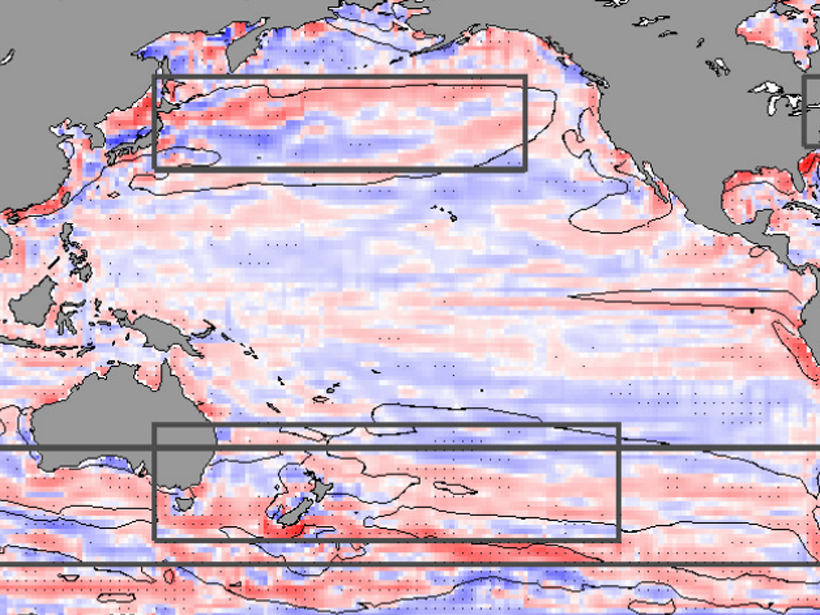Source: Geophysical Research Letters
Ocean gyres are basin-wide currents that redistribute mass, heat, salt, nutrients, and other properties from low to high latitudes. These large-scale wind-driven circulation systems are typically characterized by strong boundary currents along the continental coastal margins with more sluggish flow in the central sections of the gyres.
The gyres often have an outsized role in transporting biogeochemical nutrients that maintain ecologically and economically important marine ecosystems as well as play a critical function driving the atmospheric circulation particularly in the subtropics.
Yang et al. [2020] find that the global oceanic gyres have been slowly shifting poleward over the past four decades. Both anticyclonic subtropical gyres, identified by centers of relatively high sea surface height (SSH) and cyclonic subpolar gyres with centers of low SSH, advanced poleward on the order of around 0.04-0.1 degrees latitude per decade.
Similar poleward trends were observed in the strong sea surface temperature (SST) gradients that mark the boundaries between the subtropical and subpolar gyres. While the poleward trends in the southern hemisphere ocean gyres were significant, many of the poleward trends in the northern hemisphere gyres were not statistically significant and could not be distinguished from natural climate variability.
Nonetheless, climate model simulations suggest that a warming world would drive a poleward shift in the winds consequently displacing the oceanic gyres poleward. This shift could have important consequences for the overlying atmosphere impacting jet streams and storm tracks that influence near-term climate variability. Thus, it is important that oceanic observations are continued, and simulations are performed to investigate the time-line and magnitude of these changes and to further verify their robustness.
Citation: Yang, H., Lohmann, G., Krebs‐Kanzow, U., Ionita, M., Shi, X., Sidorenko, D., et al. [2020]. Poleward shift of the major ocean gyres detected in a warming climate. Geophysical Research Letters, 47, e2019GL085868. https://doi.org/10.1029/2019GL085868
—Janet Sprintall, Editor, Geophysical Research Letters
Text © 2020. The authors. CC BY-NC-ND 3.0
Except where otherwise noted, images are subject to copyright. Any reuse without express permission from the copyright owner is prohibited.

